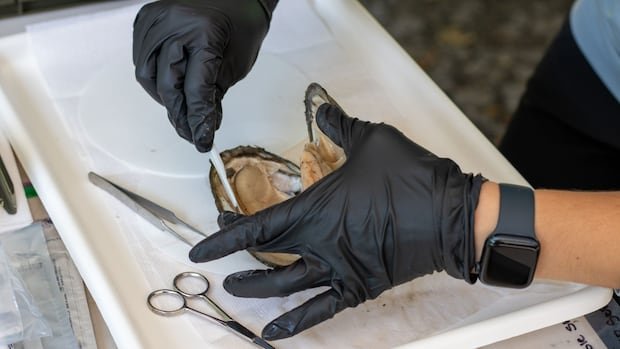A team of researchers in Brantford, Ontario, is studying mussels in the Grand River to investigate the impact of various chemicals on the environment. Patty Gillis, a research scientist at Environment and Climate Change Canada in Burlington, leads the team focusing on aquatic contaminants. They utilize freshwater mussels as indicators of water quality to assess the presence and effects of pollutants.
Mussels, being stationary creatures that filter water through their gills, are directly exposed to contaminants present in the water and riverbed sediment. By examining the mussels’ tissue, the team can identify potential health issues caused by exposure to substances like metals or pharmaceuticals.
The research team is specifically investigating the effects of individual chemicals and chemical mixtures on different mussel species. This initiative is part of a broader project called the Integrated Chemical Mixtures Project (ICMP), which involves studying sites in Brantford and Windsor, Ontario. The ICMP aims to understand complex chemical mixtures and their impacts on the environment and human health.
Mark Hewitt, a chemist from Burlington involved in the ICMP project, emphasizes the importance of comprehending these chemical mixtures and their potential harmful effects. The project is driven by a commitment to the right to a healthy environment and focuses on collaborative efforts to address environmental impacts effectively.
The team in Brantford conducts on-site sampling downstream of the municipal wastewater treatment plant. By analyzing mussel populations, assessing stress levels in the mollusks, and testing for metal and chemical presence in their bodies, the researchers aim to gain insights into the broader environmental impact of chemical contaminants.
Through a multi-team approach, the project aims to compare findings across different locations to understand the extent of chemical contamination. The team’s fieldwork involves measuring mussels, collecting samples, and analyzing hemolymph and tissue to determine the accumulation of contaminants.
Looking ahead, the team plans to expand their research by examining the stress levels and chemical accumulation in mussels placed upstream and downstream of key locations. By studying various aquatic organisms’ responses to chemicals, the team aims to provide a comprehensive understanding of the environmental impact.
